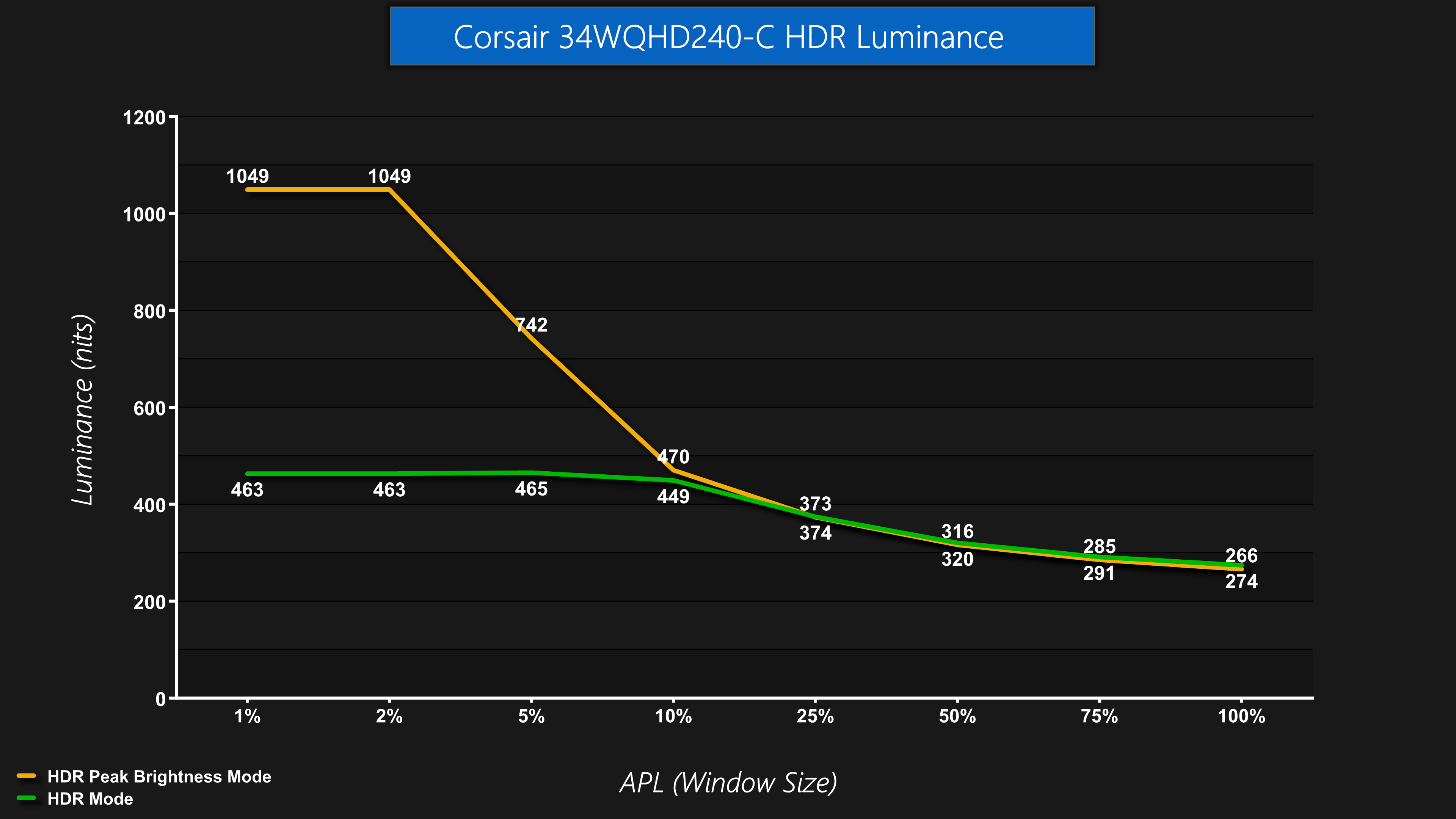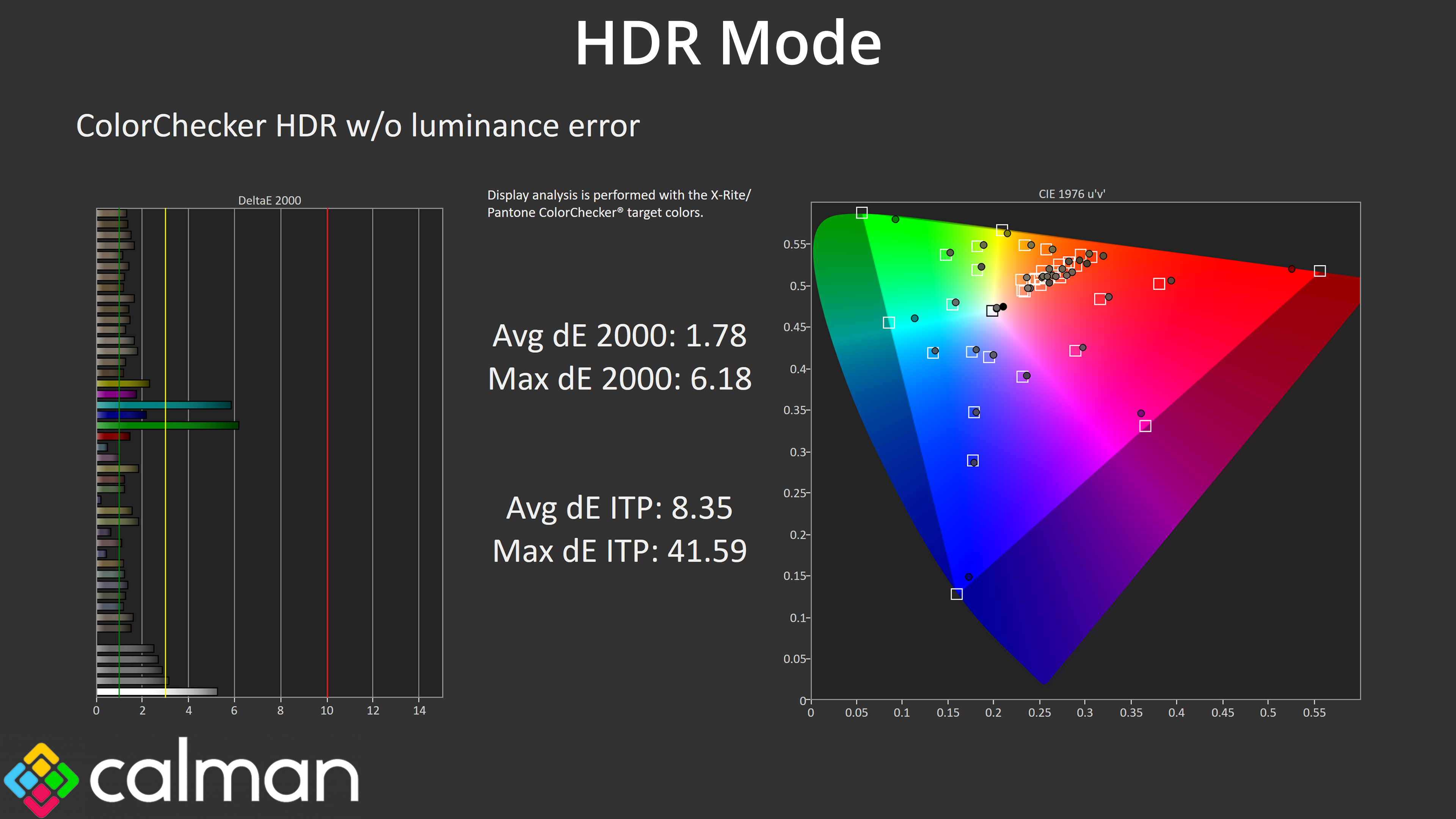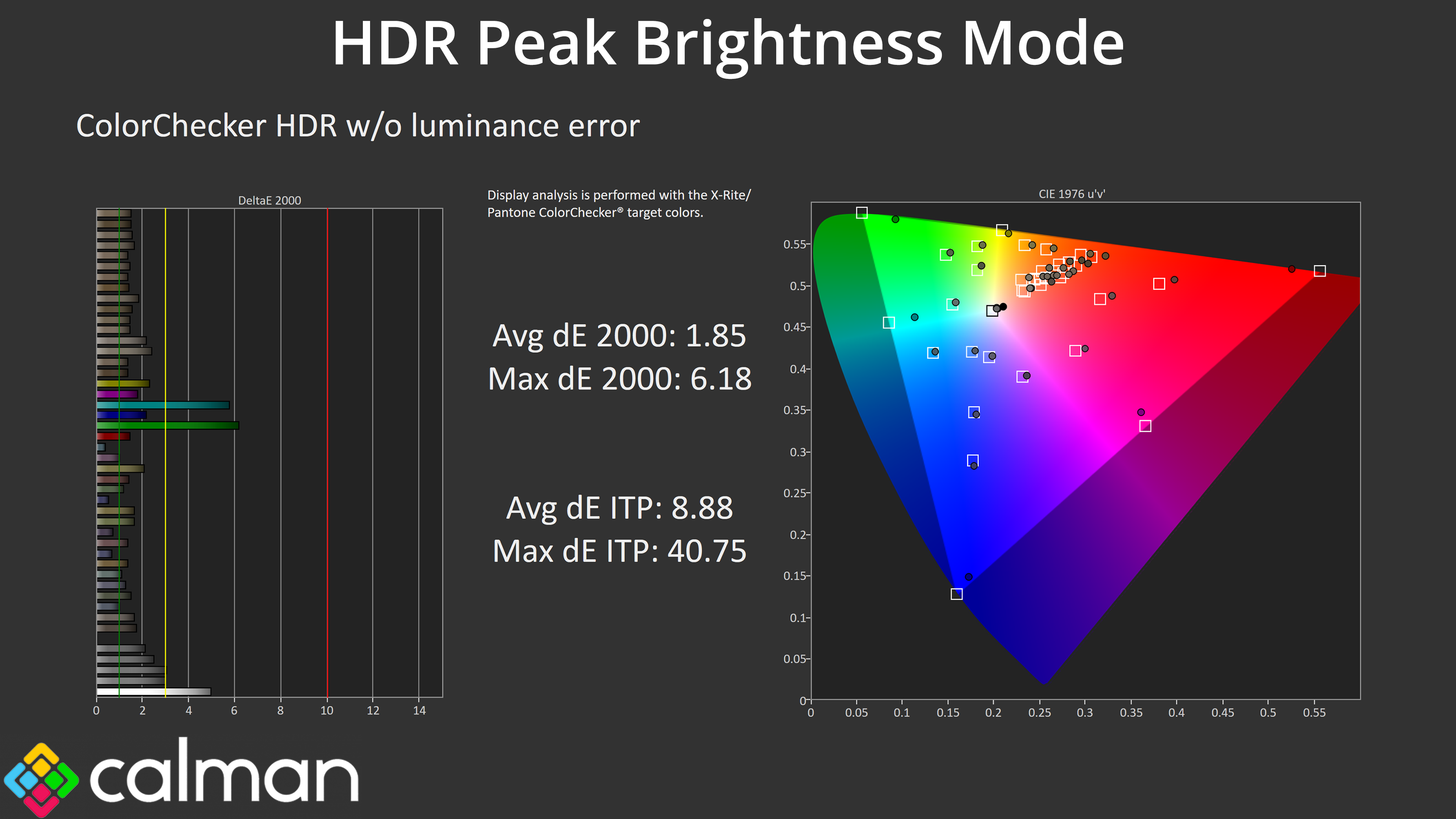HDR Testing
Following on from the SDR results on the previous page, here we re-test the relevant areas of the display with HDR enabled.
Brightness
The first thing to establish is that Corsair provides two HDR modes, which is standard for QD-OLED. The first is simply called ‘HDR' and is the True Black 400 equivalent, peaking at about 460 nits. Then there's the HDR Peak Brightness mode which ups brightness to over 1000 nits for the 1% and 2% APLs, before dropping off as the window size increases.
Greyscale
As we've come to expect, the HDR mode is very accurate with near-perfect EOTF tracking when using a 10% APL.
The HDR Peak Brightness looks OK initially, but the EOTF curve does roll off slightly too early at the 10% window size.
In the past, I would have left my testing there, but credit must go to Simon from TFTCentral and Tim from Monitors Unboxed, both of who have done some excellent testing highlighting why it's important to test HDR performance at a range of APLs (window sizes).
As we can see, the HDR mode is very consistent regardless of APL, being generally very accurate across the curve from a 2% up to a 50% window size.
However, what my previous testing did not show is that the HDR Peak Brightness mode continues to roll off early at an increasing rate. The bigger the APL, the more it rolls off, resulting in an overly dark image.
This means users have to choose between lower peak brightness but a much more accurate image, or much higher peak brightness at low APLs but reduced accuracy and a generally darker image for larger window sizes, neither of which is really ideal.
Colour Accuracy
Just to round off testing, actual colour performance is fine regardless of the mode you choose. The main culprits are the 100% cyan and 100% green channels, which the monitor is never going to be able to replicate accurately as it does not cover the whole Rec.2020 space.
 KitGuru KitGuru.net – Tech News | Hardware News | Hardware Reviews | IOS | Mobile | Gaming | Graphics Cards
KitGuru KitGuru.net – Tech News | Hardware News | Hardware Reviews | IOS | Mobile | Gaming | Graphics Cards







